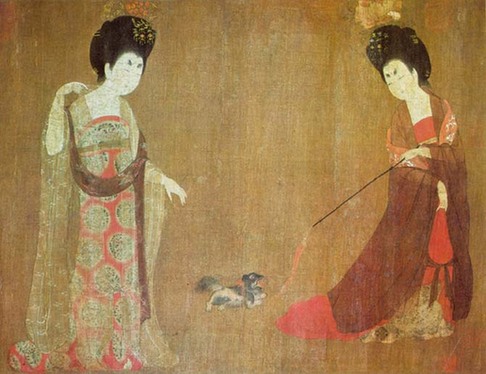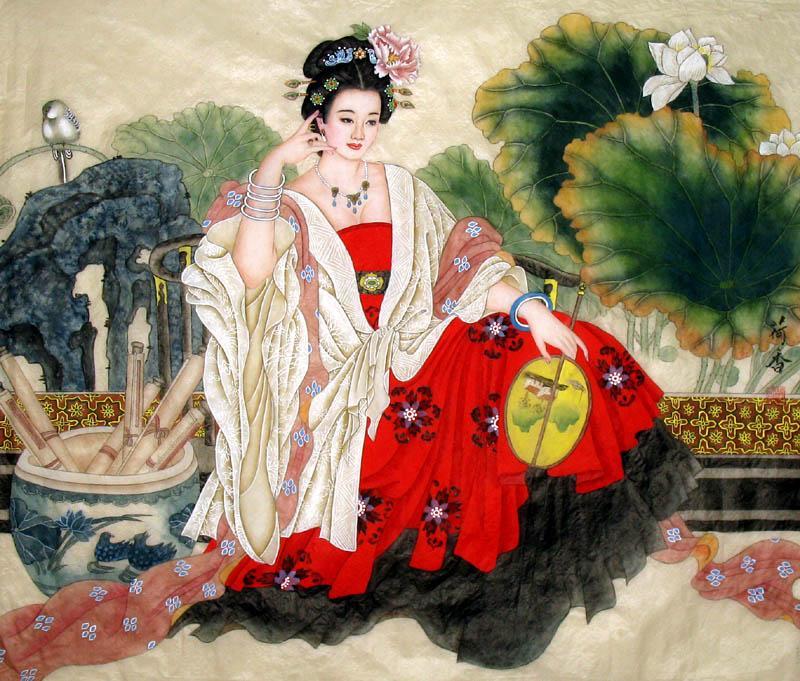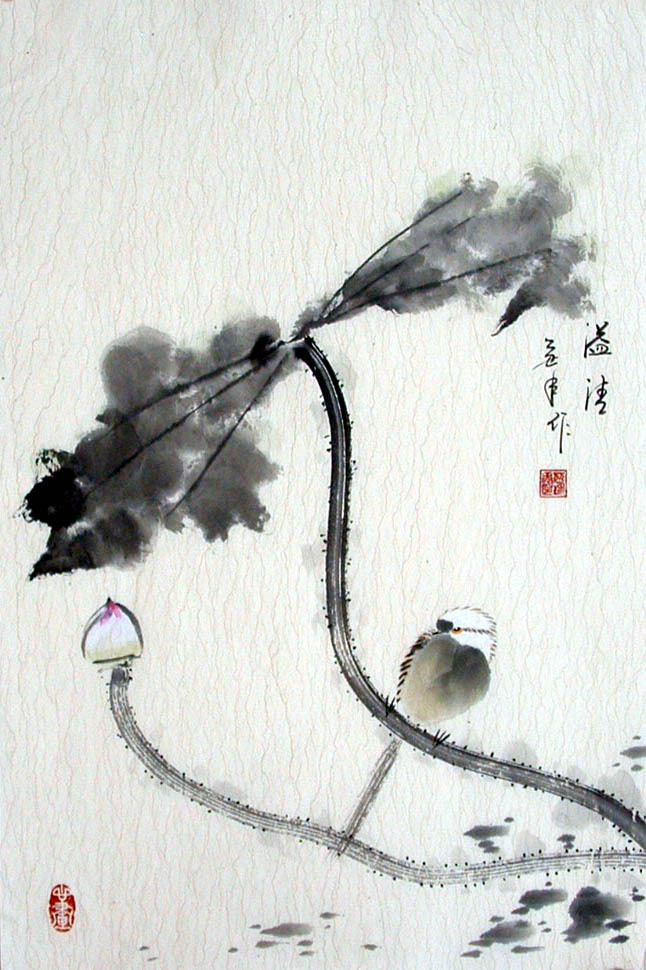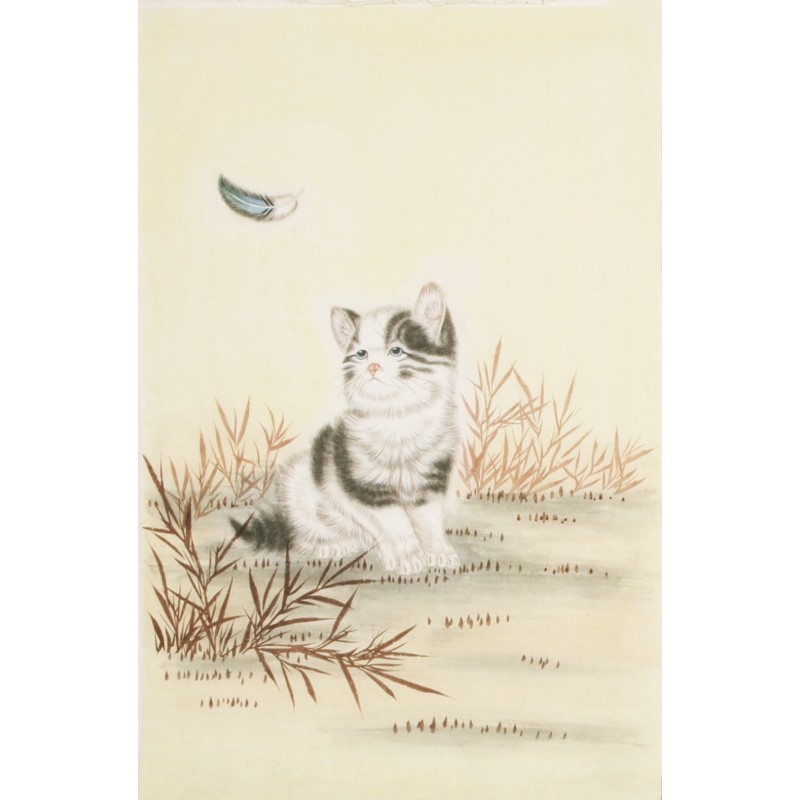In terms of topics, Chinese painting can be classified into three branches: human figures, landscapes and flowers-birds.
Chinese figure paintings appeared before landscape or flowers-birds paintings. In the early times, the figure painting was aimed to server religious or political purpose. It can be divided into several ranges: Taoist-and Buddhist painting, Female images, Portrait, Genre painting, and History-story painting. The most remarkable artist of Chines figure painting was Gu Kaizhi who lived in the Six Dynasties period (220-589). His masterpieces Admonitions of Court Instructress, Nymph of the Luo River, Wise and Benevolent Women were all good examples of the Chinese figure paintings.
Chinese landscape paintings, also named shanshui paintings, usually depicted mountains, water and mist. Chinese landscape painting began to appear in Jin Dynasty (265-420), and came to become the most popular style of paintings during the mid and late Tang Dynasty (618-906). The main purpose of Chinese landscape painting at this time was not to reproduce exactly the appearance of nature but to grasp an emotion or atmosphere so as to catch the rhythm of nature. Chines landscape painting went on to develop at the Song Dynasty (960-1279). Song Dynasty’s Zhang Zeduan painted Along the River During Qingming Festival which was a great landscape painting. It is also one of the most well-known masterpieces of Chines visual art.
Chinese flowers-birds painting can be traced back to the remote past of China. Patterns of flowers and birds on pottery, bronze vessels and phoenix paintings on silk were the early indications of the Chinese people’s interest on such subjects. But the flowers-birds painting did not become an independent art form until the mid and late Tang Dynasty (618-906). It reached maturity during the Song Dynasty (960-1279). Chinese flowers-birds painting covers flowers, birds, fish and insects. Representatives of this style of paintings were many, such as Emperor Huizong in Song Dynasty, Tang Yin in Ming Dynasty (1368-1644), and Qi Baishi in Modem society.






